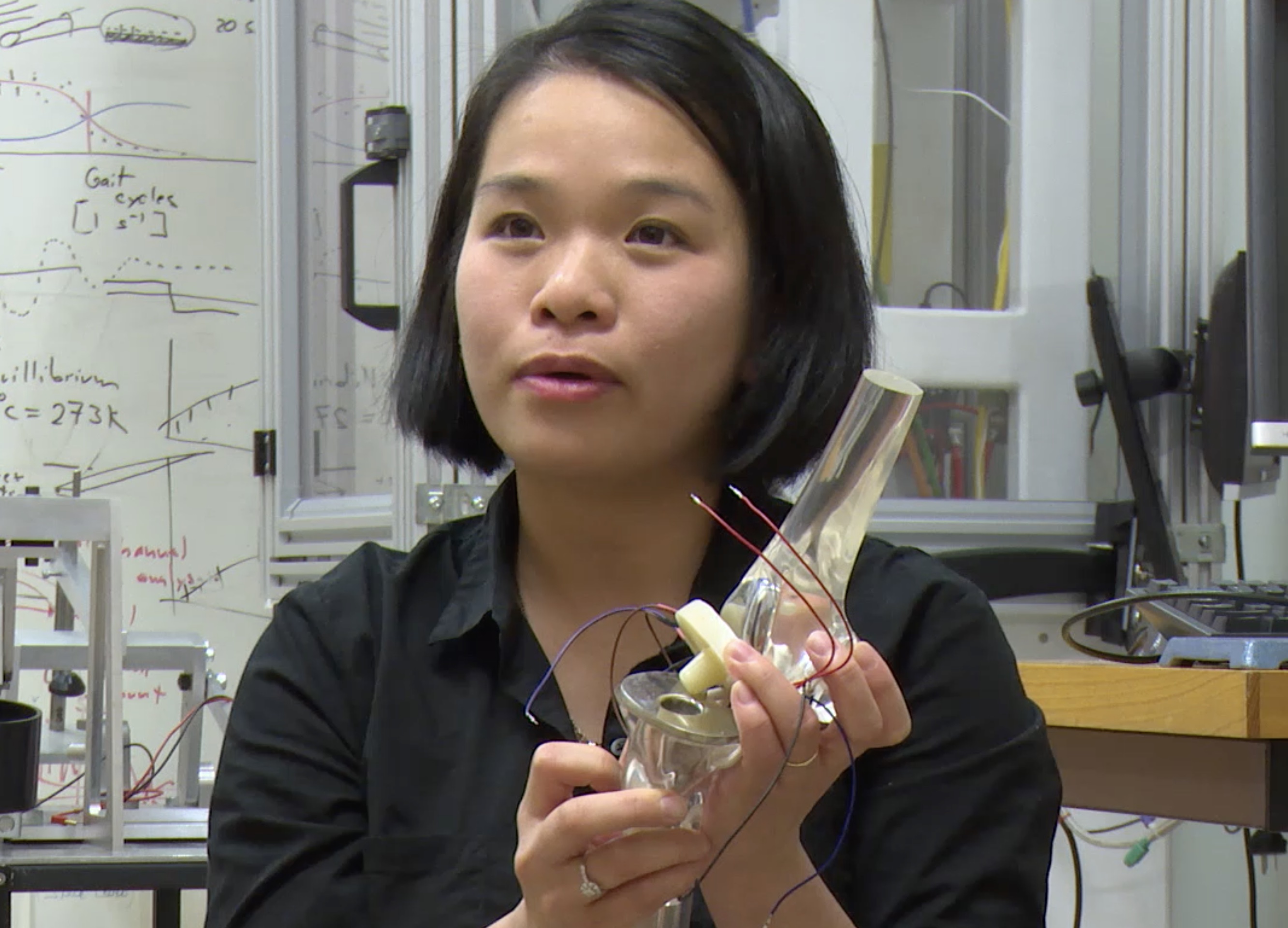Aerospace technology finds new potential in biomedicine
What do aeroplanes and prosthetics have in common? On the surface, very little. However, they can both be improved using the same engineering solutions.
What do aeroplanes and prosthetics have in common? On the surface, very little. However, they can both be improved using the same engineering solutions.

What do aeroplanes and prosthetics have in common? On the surface, very little. However, they can both be improved using the same engineering solutions.
It’s why UNSW Canberra Aeronautical Engineering Associate Professor Sean O’Byrne has been overseeing PhD students developing sensors in biomedical engineering.
“It’s really interesting and it's a great example of interdisciplinary work,” Associate Professor O’Byrne said.
“Not only is it a collaboration between our research group and the Trauma and Orthopaedics Research Unit at Canberra Hospital, but it's also a collaboration between aeronautical engineers like myself and physicists, like my colleague Heiko Timmers.
“It's a great example of how when you get a group of people with different skill sets together, you can solve problems in a variety of different fields.”
Dr Quyen Do has just completed her PhD studies at UNSW Canberra, where she began developing microscopic sensors that can be used to detect wear and tear in knee replacements.
“The sensor can be incorporated into the knee bearing,” Dr Do said.
“When the load is applied, we can see the measurement from the sensor. Then the doctor and the patient can be sure that the alignment of the components is correct. If the patient experiences any extreme loading, the doctor can give feedback to the patient to correct things like that.”
Made from carbon nanotubes and polyethylene, these sensors are piezoresistive. This means they can detect a change in electrical resistance when mechanical strain is applied.
The technology is still being developed, and first year PhD student Ruth Poblete is applying the sensors to the insoles of shoes for diabetic patients. She is part of a cross institutional team lead by Associate Professors Sean O'Byrne and Heiko Timmers that includes also biomechanics and sports medicine researchers at the University of Canberra and UAS Muenster in Germany.
One of the complications of diabetes includes nerve damage, otherwise known as diabetic neuropathy, causing a loss feeling in the feet. Left untreated, this can lead to serious injuries and even amputation.
“There are therapeutic shoes that are available in the market to distribute pressure across the feet, but just like any others, they wear out and eventually lose their functionality,” Ms Poblete said.
“This is where I will come in. I would like to develop an insole that would detect pressure and at the same time distribute it across feet.”
While the developing technology could be a breakthrough for biomedicine, Associate Professor O’Byrne said it has wider applications.
“There’s a lot of really exciting possibilities in the biomedical area,” he said.
“In addition to that, anything where things are likely to break over a long period of time, but you’re not quite sure when they’re going to break, these sorts of technologies are applicable.”
For the aeronautical engineer, this means aircraft.

The sensors could be used in a wide range of technology, from knee replacements to aircraft.
“You can imagine that putting these carbon nanotubes in a composite material – like what Airbus aircraft are made from, for example – and being able to sense the loads on that air frame of the aircraft, can tell you things like when there's fatigue damage,” Associate Professor O’Byrne said.
“The wings in turbulence vibrate up and down, there can be little cracks that form and those cracks can be very hard to detect. But if you have a system like this, it can actually tell the computer that's controlling aircraft when something might be going wrong.
“That's my area of interest in an aerospace sense in this technology. But I was approached by an orthopaedic surgeon asking, ‘is there some way that we can look at these problem of loads changing over very long periods of time and people's knees?’, and it was that discussion that led to the idea of making these plastics that sense themselves – a type of smart material.”
It’s a technology that could be applied to anything that requires a regular service, and Associate Professor O’Byrne said it’s an area that has huge potential for PhD students to help develop.
“This is just one example of some tremendous technologies that come out of universities in Australia, out of ideas of people getting together and wondering how they can make the world a better place,” Associate Professor O’Byrne said.
“What we really need now are more young, enthusiastic people, like Quyen and Ruth, to take this to a place where it can really help many people’s lives and I look forward to seeing that happen.”
Related stories:
Ask an expert: What is hypersonics?